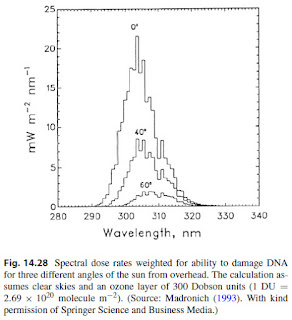 |
| An antiscatter grid. Episcophagus, CC BY-SA 4.0, via Wikimedia Commons. |
Since the radiograph assumes that photons either travel in a straight line from the point source in the x-ray tube to the detector or are absorbed, Compton-scattered photons that strike the detector reduce the contrast and contribute an overall background darkening. This effect can be reduced by placing an antiscatter grid (or radiographic grid, or “bucky” after its inventor, Gustav Bucky) just in front of the detector.Who is Gustav Bucky? We can learn more about his life and work by examining the chapter “Two Centenaries: William Coolidge & Gustav Bucky,” by Elizabeth Beckmann and Adrian Thomas, in The Story of Radiology (Volume 2), published by the European Society of Radiology. Beckmann and Thomas begin
Gustav Peter Bucky was born on September 3, 1880 in Leipzig, Germany. He wanted to be an engineer, however at the insistence of his parents he transferred to study medicine at the University of Leipzig, graduating in1906. The combination of his interest in photography at school, his ambition to be an engineer and his parent’s insistence that he study medicine would lead him into the relatively new technical branch of medicine which was to be called radiology.I’ve seen many reasons for scientists to straddle between physics/engineering and biology/medicine. In Bucky’s case the reason was parental pressure.
Beckmann and Thomas of course mention Bucky’s biggest contribution to science, his antiscatter grid.
It was Gustav Bucky who realised that the main problem was finding a way to reduce the scattered radiation that was responsible for the loss of definition of the radiological image from reaching the film. However, this had to be achieved with minimum impact on the primary x-ray beam. Bucky had his original idea on how to achieve this in 1909, but it took some years of experimenting for him to develop his design.You can eliminate those artifact lines by moving the grid.
Bucky described his original design for the ‘Bucky Diaphragm’ as a ‘honeycomb’ lead grid, but with individual elements being square in shape, rather than hexagonal. He used lead since it was a material which absorbed x-rays. In this design the lead strips were thick and spaced 2 cm apart, running both parallel to the length and width of the film. This resulted in the lines of the grid being visible on the x-ray film. Despite this, the grid was effective and did remove scatter and improve image contrast.
In 1920, the American Hollis Potter further developed the grid. Potter aligned the lead strips so that they now ran in one direction only, and he also made the lead strips thinner so that they were less visible on the image. Potter also proposed moving the grid during exposure, which blurred out the image of the lead strips on the radiographic image... The resulting moving grid, based upon the work of Bucky and Potter, became known as the Potter-Bucky grid.
 |
| Albert Einstein and Gustav Bucky, Leo Baeck Institute, F 5347B. |
In 1933, Bucky met up again with his friend Albert Einstein when he arrived in New York. When on holiday together Gustav and Albert would go for a long walk together each day, discussing and developing new ideas…The story concludes
Probably the most famous collaboration between Bucky and Einstein was the idea of ‘a light intensity self-adjusting camera’ with a US patent granted on October 27, 1936...
It is a sign of the close relationship between Bucky and Einstein that Bucky visited Einstein every day during his final illness and was at the hospital only hours before Einstein’s death in April 1955.
Gustav Bucky was a friendly, modest, undemanding person who made a lasting and significant contribution to radiology. For 21st century radiology the impact of the invention for which Gustav Bucky is most remembered – the Bucky Grid – continues. The grid is as important in modern digital detection systems, like computed radiography (CR) plates or digital radiography (DR) detector systems, as it was with x-ray film in the 1920s.











































